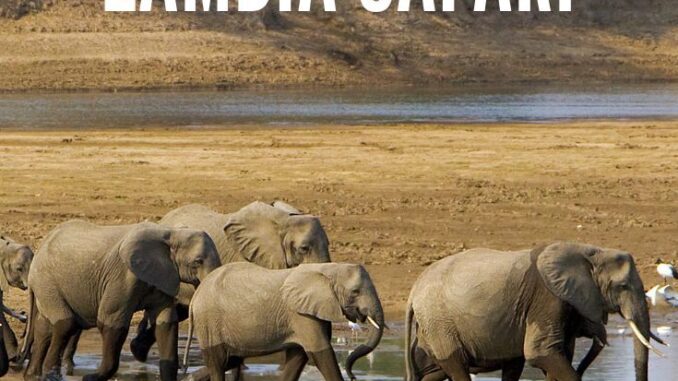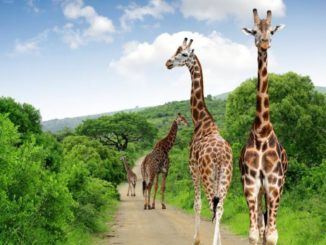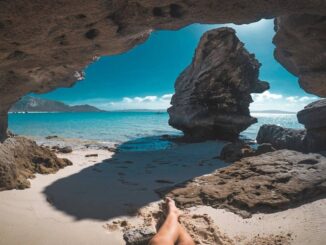
When you really want to appreciate nature, solid structures are more of a hindrance than a blessing. When you arrive at a Zambian game viewing venue, you will find easy open structures fashioned of porous canvas and indigenous materials with the majesty of nature all around you – the towering trees of the wilderness, open house in camp for browsers and even the odd Puku. When you’re in your tent, reeded bungalow, or thatched cottage, you are part of the warp and weft of the wilderness environment.
Birdcalls, rustlings in the grass, the distant roar of a hunting lion float right into your range of hearing and you experience the sweetness of nature’s breath. Within an easy amble, the open-sided common rooms and airy enclosures allow you to congregate with your safari companions for informal conversations … open fire reveries under the stars … and hearty meals to set you up for a contented sleep, leading to super vigilance for game viewing excursions.
Explorer’s Africa will always be in vogue … but Welcome Tourism Services believes a fair measure of luxury is fashionable too.
Zambia is often described as the ‘real Africa’ and it is easy to see why. The country is famed for its huge protected wilderness areas and the South Luangwa National Park is home to arguably the most diverse range of game in Africa. Birds are also found in rich profusion.
With Africa’s wildlife areas rapidly disappearing, Zambia remains the least disturbed and commercialised and is still blessed with lush vegetation, abundant water and a firm commitment to preserve her vast tracts of African wilderness, spread over 19 National Parks and 33 game management areas.
A safari in Zambia offers a legendary wildlife experience on game drives in open vehicles, on walking safaris through pristine bush, or canoeing safaris down the Zambezi.
Some of the most knowledgeable wildlife experts in the world run the safari operations in Zambia. This, together with vigorous standards of training for guides, rangers and trackers ensures wildlife enthusiasts are provided with an in-depth and entertaining exploration of the African bush. The warm welcome of the Zambian people and culture provide an added dimension to an unforgettable experience.
Welcome Tourism Services believes that like Botswana, Zambia is best suited to tailor made tours and safaris. Although we have highlighted some itineraries and special interest opportunities, there are a multitude of safaris, accommodation choices and activities available. Our specialised consultants will tailor make the ideal Zambian adventure based on client interest, budget and time frames available ensuring each safari epitomizes the spirit of Africa.
Covering 750 000 sq. km Zambia sits on a plateau averaging 1 300 metres above sea level. Though situated in the tropic belt of south central Africa, Zambia’s elevation gives it a moderate climate. There are three seasons: warm and wet between Dec and Apr; cool and dry from May to Aug; hot and dry from Sept to Nov. The wet season (particularly Oct) is noticeably humid in the Zambezi and Luangwa Valleys.
Zambia gained its independence in 1964 under Dr. Kenneth Kaunda and became a Commonwealth republic. In 1972 the country was declared a one party state but reverted to multi party politics in December 1990.
The basis of Zambia’s economy is the mining of copper and cobalt, which together provide more than 90% of the country’s foreign exchange earnings. Extensive efforts are being made to diversify its economic base with agriculture, manufacturing and international tourism becoming increasingly important and the country remains one of Africa’s most prosperous nations.
Starting life as a simple railway halt in 1905, Lusaka has been Zambia’s capital since 1935 and today is one of the fastest growing cities in central Africa. Of special interest are the stunning Munda Wanga Botanical Gardens and adjoining zoo, the Anglican Cathedral of the Holy Cross, the Zambian Gemstone and Polishing Works (producing fine jewellery from precious and semi-precious stones) and the bustling Luburma Market.
Prior to 1935, Livingstone was the capital of what was then called Northern Rhodesia and is situated about 10 km from the magnificent Victoria Falls on the Zambezi River. The Livingstone Museum is the country’s national museum, tracing the history of man in Zambia, and has a particularly good collection of memorabilia relating to the explorer/missionary Dr. David Livingstone. The Victoria Falls Field Museum stands on an archaeological site and displays stone tools from some 2.5 million years ago.
The Railway Museum traces the history of rail transport in Zambia and has a collection of locomotives and rolling stock dating back to the early 1900’s. The Maramba Cultural Village just outside Livingstone provides an interesting look at Zambian culture and the Hukini Village on the road to the gorges of Victoria Falls gives interesting demonstrations of crafts and carvings. The Mosi-oa-Tunya National Park is home to some of Zambia’s remaining rhino. A wide variety of adventure activities including white water rafting, kayaking, canoeing, microlighting and river cruises are available from all Livingstone based hotels and lodges.
Covering 22 500 sq. km, the Kafue National Park is bordered by the blue-green Kafue River and stretches from the vast Busanga Plains in the north, to the miombo woodlands of Nanzhila in the south. The park remains as it has been for centuries providing great diversity of landscape and habitat making it one of Africa’s most interesting and rewarding parks.
A profusion of game including elephant, lion, leopard, cheetah, hyena, buffalo, roan, sable and a wide variety of other antelope can be sighted regularly and the bird life is extensive and rich in variety. A short distance down stream from Lake Kariba is the Zambezi Valley, fringed by rugged escarpment and a veritable wildlife menagerie. Attracted by lush floodplains, verdant woodlands and permanent water, elephants, buffalo and antelope move in big herds. Lion, leopard and hyena maintain checks and balances. A river alive with fish and a land of habitat diversity has resulted in a bewildering range of bird species. Canoe safaris have become a popular way of exploring the Lower Zambezi, enabling visitors to get close to the wildlife in its natural environment.
Just three hours drive from Lusaka is the World Heritage Wetlands site of the Lochinvar National Park. Although not abundant in larger mammals, Lochinvar has outstanding birding opportunities, with over 428 recorded species. The park is situated on the southern edge of the Kafue Flats and is particularly well known for the large herds of Kafue Lechwe, Blue Wildebeest, zebra, buffalo, Greater Kudu, bushbuck, oribi, hippo, reedbuck, waterbuck and the elusive Sitatunga are also present.
The Luangwa Valley stretches the length of eastern Zambia. Framed by craggy escarpments and sustained by the dynamic Luangwa River, the valley is home to the North and South Luangwa National Parks. With a combined reach of 20 000 sq. km, the two parks encompass a raw wilderness of abundance and diversity where the relentless daily drama of survival plays to a small, privileged audience.
The valley is home to over 50 mammal species, predators are common, buffalo and elephants abundant and hippo choke the river in pods a hundred-strong. Over 400 bird species have been recorded and seasonal migrants enhance this bird lover’s paradise where storks and pelicans indulge in riotous ‘fishing parties’, Carmine Bee-eaters nest in thousands, Crowned Cranes whoop in flocks and vultures fill the sky along with 38 other raptor species.
Unless otherwise stated, PONIREVO and/or its licensors DO NOT own any intellectual property rights in the website and material on the website. Majority of the site’s content has been scraped and auto posted by a third party artificial intelligence program —– PONIREVO Creation Team.
Proudly WWW.PONIREVO.COM



